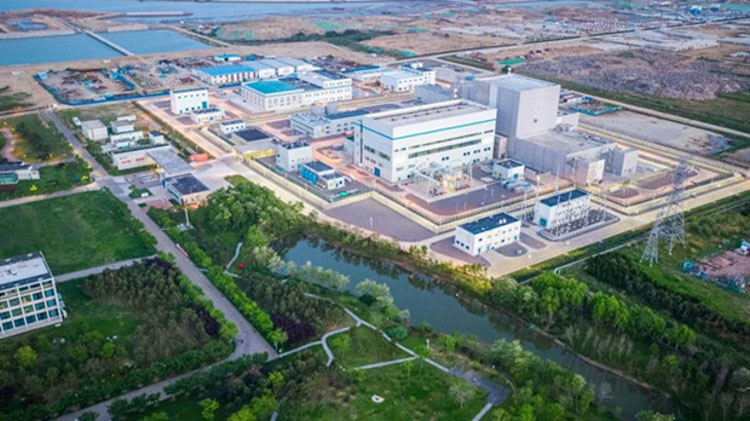The world’s first fourth-generation commercial nuclear power plant, built in China, has successfully completed reactor shutdown tests. The passive protection system prevented the core from melting and stabilized the temperature and reaction within 35 hours. No additional actions were required by nuclear power plant personnel or emergency crews. Everything happened naturally and did not lead to equipment damage.

Shidaowan NPP with a pair of HTR-PM reactors. Image source: CNNC
The tests took place at the Shidaowan-1 NPP. The plant contains two “modular” reactors with a nominal thermal output of 250 MW(t). They both drive a common turbine with a capacity of 211 MW(e). By adding new reactors (modules), the possibility of working with more powerful generators opens up.
Shidaowan-1 NPP is equipped with high-temperature gas-cooled pebble bed reactors (HTR-PM). The core of such reactors consists of several layers of “pebbles”, which are 60-mm graphite balls, inside of which there is uranium-235 enriched to 8.5%. The outside of the balls is coated with silicon carbide. Helium heated to 250 °C is blown through this layer, which will always be gaseous beyond cryogenic temperatures.
An emergency shutdown of such a reactor does not lead to overheating of the neutral gas above the operating temperature of 750 °C. Moreover, due to the effect of Doppler broadening, as the fuel emergency heats up, the decay reaction decays by itself. Stopping all machines servicing the reactor after just a few minutes leads to a decrease in the intensity of the decay reaction, while de-energizing or stopping pumps in conventional water reactors under pressure ends with the melting of the core and the release of radioactive decay products along with steam and water decomposed into hydrogen and oxygen.
The engineers had full confidence in the reliability of the HTR-PM reactor and passive protection systems, which they proved for the first time in the world during the emergency shutdown of a commercial reactor. Previously, such an experiment was carried out only on the experimental reactor HTR-PM, created decades ago in Germany. Stopping all systems physically cannot lead to an increase in the temperature in the core to 1600 °C, which has been confirmed by tests. Fuel loaded into the reactor in the form of “pebbles” calmly tolerates such temperatures without destruction. The decay reaction and temperature in the core stabilized 35 hours after the “accident”. After this, the reactors could be put back into operation as if nothing had happened.